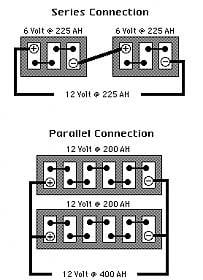I am looking for locations on this stuff.
Does your camper have an outlet for rv hook ups?
Explain where? I could kinda guess.
Do you have an inverter/converter in your camper for AC current, recharging battery.....? Where do you keep that.
If you have a gel cell battery where do you keep that and what brand would you recommend? Even a wet cell where do you keep that, expecially since it adds risk? Our camper came with a wet cell and charger in the propane box, as you know we are changing that.
I have been reading the battery thread.
Dorian and I plan on taking care of electrical next. We are looking into a gel cell battery and already got our inverter/converter for AC current. We are starting to rewire, it was kinda sloppy before. As everyone knows we are headed for a long trip and want to be prepared. We would like to know your ideas for storing these items..
Thanks everybody!!!
Angelina
Does your camper have an outlet for rv hook ups?
Explain where? I could kinda guess.
Do you have an inverter/converter in your camper for AC current, recharging battery.....? Where do you keep that.
If you have a gel cell battery where do you keep that and what brand would you recommend? Even a wet cell where do you keep that, expecially since it adds risk? Our camper came with a wet cell and charger in the propane box, as you know we are changing that.
I have been reading the battery thread.
Dorian and I plan on taking care of electrical next. We are looking into a gel cell battery and already got our inverter/converter for AC current. We are starting to rewire, it was kinda sloppy before. As everyone knows we are headed for a long trip and want to be prepared. We would like to know your ideas for storing these items..
Thanks everybody!!!
Angelina



